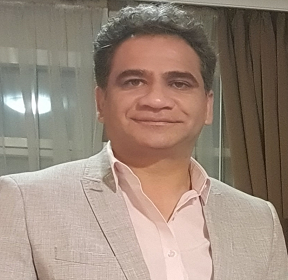
Wael Mohamed Fathy Abdelnaeem Ahmad
University of Cairo EgyptTitle: Forensic Chemistry Consultant – Center of Forensic and Digital Science
Abstract:
Laboratory and Personnel: means and equipment for toxicological analysis should meet an acceptable scientific standard. Laboratory procedures must ensure the safety handling of any hazards (toxic, biological samples, and prohibit), access for the laboratory, must be for only authorized persons (director, quality manger analysts, consultant, evidence officer,..) and an adequate detection, and quantification must be performed for all substances under laboratory scope. Laboratory personnel (director, consultant, analysts) are sufficient trained and experienced to conduct their work and maintained the competency of laboratory. Sample and Receiving: Proper and sufficient samples must be taken to get accurate results. Laboratory director or his designee should develop and provide detailed guidelines and instructions to all agencies which the laboratory serve. Specimens received by the laboratory must identified and store in a good and secure place such that the integrity of the specimens is safeguarded. Acceptable written standard operating procedures (SOP) should be followed. Practical work: All samples and extracts must be labeled in a good manner to ensure the integrity of the analytical results. Chain of custody (COC) very important to document the path of the specimen through the laboratory. Methods and procedures in (SOP) manual must be validated and written in clear manner ,and contain sufficient information, that the analysts can follow them. All documents should be approved by laboratory director or his designee. Any changes in documents (method or procedure) must be clearly documented, stating the reasons for the changes, must be approved also by the director of the laboratory or his designee. Detection by screening techniques (ex: Immunoassay) can apply first, after that confirmatory techniques (Chromatographic Techniques) with proper validated methods, quantitation, and calibration must apply for interpretation of the results. Review and Documentation of The Results: It’s very important for the laboratory to have their own internal quality program, and depending on the type of the laboratory analysis the laboratory should participate in external quality assurance and proficiency testing programs. All analysis results must be documented. This record should include all information necessary to identify the case (name of agency, name of accused person, case number, description, and number of exhibits,…). Review of the results should be run in two steps technical and administrative. The final report must answer all the requesting from all agencies or parties (Request Form) which the laboratory serve. Reference TIAFT-Bulletin XXXI Number 4 p. 23-26
Biography:
• Post-Doctoral Fellowship (2014-2015), Texas Southern University, School of Public Affair, Forensic Department, Houston, Texas, United States of America. • Ph.D. Biochemistry - Faculty of Science -University of Cairo 2009. • Master Biochemistry - Faculty of Science- University of Cairo 2004. • Diploma of the training program for Arab anti-drug - National Center for Social Research and the Criminal - Egypt • Bachelor of Science Department of Chemistry -Faculty of Science South Valley University 1995. • Forensic Chemistry Consultant – Center of Forensic and Digital Science, Judicial Department, Abu Dhabi, UAE. ( present). • Forensic Toxicologist Technical Supervisor- Forensic and Toxicology Laboratory, Forensic Medicine Authority Cairo – Egypt. (October 2001 – Present). • Ass. Professor (part-time) - Forensic and Toxicology Department, Faculty of Medicine - Beni Suef University-Egypt. (2012- 2017). • Forensic Toxicologist - Forensic and Toxicology Laboratory Forensic Medicine Authority Cairo – Egypt. (October 1998 – October 2001)
